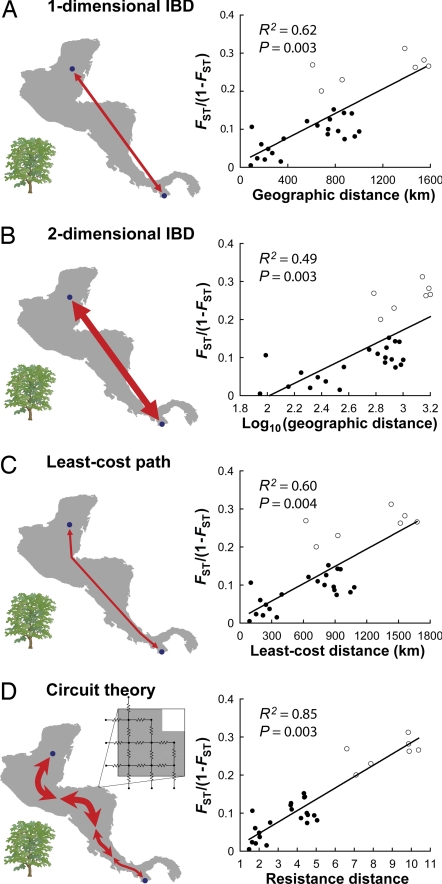Fig. 2.
Circuit theory outperforms standard models of genetic differentiation among mahogany populations. Range maps illustrate how pairwise isolation is measured under the competing models between two example populations (Nuevo Becal and Tonosí), and scatterplots show performance of the models for all population pairs. Models compared are one-dimensional IBD (A), which assumes habitat to be arranged in an infinite linear array; two-dimensional IBD (B), which assumes habitat to be arranged in an infinite plane; LCP (C), which incorporates spatial heterogeneity but assumes differentiation to vary with distance measured along a single, optimal path; and IBR (D), which predicts greater gene flow and less genetic differentiation with multiple pathways and wider habitat swaths connecting populations. (D Inset) Habitat modeled as a conductive surface. Open circles indicate pairwise comparisons including Tonosí; filled circles indicate comparisons among the remaining seven populations. Linear regression lines include all populations.

